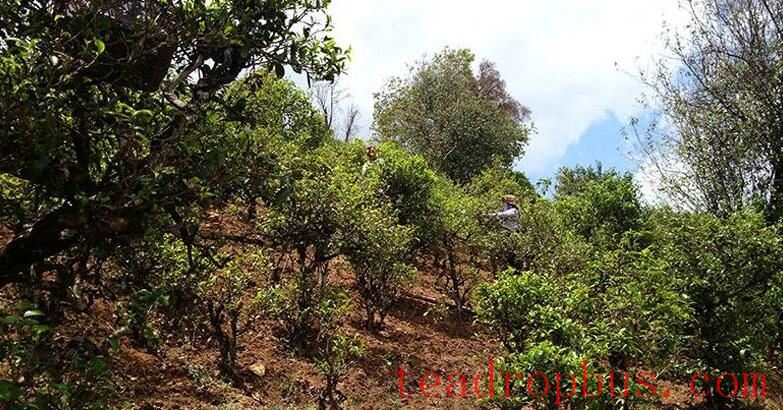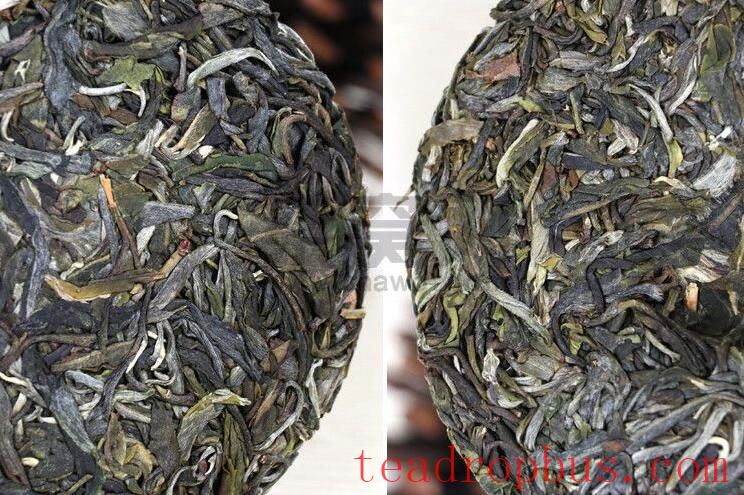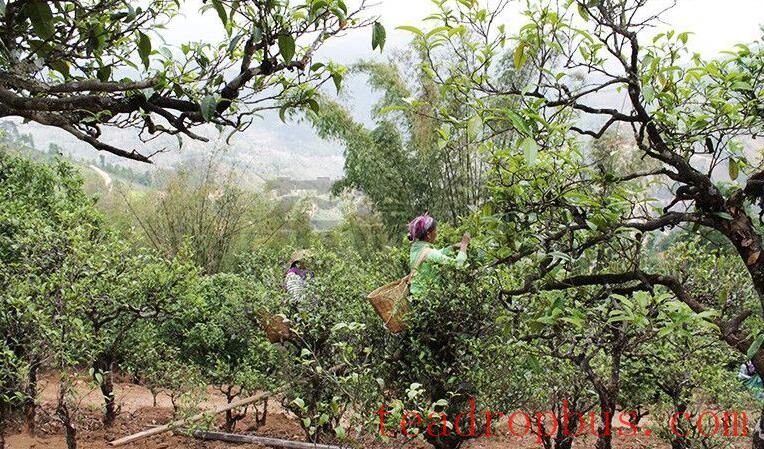Xiaohusai is located deep in the West Mountain at an altitude of 1,750 meters, backed by the Bangma Snow Mountain. The entire village is surrounded by dense forests. It is about 18 kilometers from Mengku Town and its remote location and isolated environment kept it unknown for many years. However, with the rise of Bingdao Tea, Xiaohusai, which boasts excellent ecological conditions and high-quality tea, has emerged from obscurity and become a typical representative of the West Mountain, earning the reputation of being a rival to Bingdao.

The Rocky Development of Xiaohusai
Xiaohusai is one of five natural villages under the Gongnong Village Committee. The village consists of Liangzhaizhai and Wazhaizhai, two Lahu villages, and Yizhai, which is predominantly Han Chinese. The two Lahu villages are close together and are where most of the ancient tea trees in Xiaohusai are concentrated. Yizhai is about one kilometer away. Together, these three villages have over 200 households, making it one of the larger villages in the West Mountain area.
The history of tea cultivation in Xiaohusai dates back to the early Ming Dynasty when the Lahu people settled here and began planting tea and trees, but they had little contact with outsiders. After policy liberalization in the late Qing Dynasty, Han people gradually entered Xiaohusai, helping the indigenous people farm and build homes. Through long-term effort and harmonious coexistence, they gained the right to develop the land and established tea gardens.
However, like many other tea villages in Yunnan, the residents of Xiaohusai lived in poverty for a long time. They could not sell their tea for good prices, and the corn, rice, and wheat they grew suffered poor harvests due to mountainous terrain, leaving them unable to meet even basic needs for food and shelter.

The Bumpy Road to Prosperity in Xiaohusai
As early as the 1990s, tea merchants were interested in the quality of Xiaohusai's tea and came to the village to lease processing facilities to produce Black Tea. However, due to various reasons, these ventures did not succeed, and some merchants left without fully paying for the tea. In 2006, Xiaohusai was still considered a poor village, with per capita monthly income at 865 yuan, and villagers continued to struggle financially.
In 2007, the price of Xiaohusai's ancient tree tea reached a “high” of 80 yuan per kilogram, but prices soon plummeted. In 2008, local government promoted the cultivation of tobacco in Xiaohusai, which, despite the hard work, yielded good results. However, frequent rainfall in 2009 and 2010 led to diseases affecting the tobacco, and this path to prosperity also faced challenges.
Fortunately, by this time, the trend of seeking ancient tree teas from famous mountains was gaining momentum. With rising tea prices and the strong emergence of Bingdao tea, the price of Xiaohusai tea began to climb steadily from 2009. There was another significant increase after 2016, and today the tea prices remain relatively stable. Relying on the ancient tea trees left by their ancestors, the people of Xiaohusai finally enjoy a prosperous life without worrying about survival.
It's worth noting that whenever we talk about the ancient tea tree resources in Mengku, the Lahu people often play a prominent role. This polytheistic ethnic group, who worship “Esha” (the goddess of creation and guardian in Lahu mythology), believes in animism. Their daily lives and livelihoods are inseparable from the mountains and forests, so they respect nature and live in harmony with it in its most primitive state. This natural philosophy has allowed Xiaohusai to preserve one of the largest and best-preserved ancient tea gardens in Mengku.

The Rocky Development of Xiaohusai
The lack of transportation access to Xiaohusai several times hindered its economic development but also helped preserve its precious ancient tea trees. As with other Lahu tea villages, the preservation of Xiaohusai's ancient tea garden is largely due to its inaccessibility. Xiaohusai is separated from Gongnong Village by a deep ravine. A dirt road suitable only for tractors was dug through in 2007, and it was not until after 2012 that vehicles could gradually pass through.
The Gonggang River and Chashan River, which run through the village, separate the three villages within Xiaohusai. During the rainy season, the rivers block the way, making it difficult for outsiders to enter the village. These two rivers also prevented the ancient tea trees from being pruned and allowed them to survive to this day, contributing to the unique quality of Xiaohusai's ancient tree tea.
Xiaohusai has more than 600 mu of ancient tea gardens, with the ancient tea trees growing in clusters covering over 300 mu. Most of the tea trees are the large-leaf variety native to Mengku and are of considerable age, so they tend to be tall, with many reaching over 5 meters in height. More than ten of these ancient tea trees have circumferences exceeding 150 centimeters. In terms of garden size, number of trees, and ecological environment, Xiaohusai ranks among the top in the Mengku region.
However, in terms of soil composition, the content of organic matter, total nitrogen, available potassium, and available phosphorus is relatively low. It is recommended to broaden sources of fertilizer, using methods such as composting, straw mulching, intercropping green manure, and increasing organic fertilizer application to improve soil quality and achieve high-quality, high-yield, and efficient tea production locally.
In terms of tea quality, Xiaohusai's ancient tree tea has a full-bodied, smooth taste with fine water and sweetness, reminiscent of the fragrant and soft water characteristics of Yiwu tea. It shares similarities with Bingdao tea in terms of aroma and sweetness. What is most surprising is that Xiaohusai tea also has an ice-Sugar flavor, although it is relatively lighter. Combined with a distinctive taste and relatively affordable tea prices, it offers good value for money.

A word of advice to tea enthusiasts visiting the mountains: the income of tea farmers depends not only on the number of ancient tea trees they have but also on their ability to improve the taste of their tea through processing techniques. During the spring tea season, many tea farmers lay out trays of sun-dried tea leaves outside their homes, while inside their kitchens are cold and empty. This kind of setup is typically aimed at those who are inexperienced but come looking for tea. Some tea farmers, whose fields are far from home, use banana leaves or large bamboo baskets to separate fresh leaves during transport to prevent fermentation and spoilage, ensuring that the leaves arrive at the processing facility in pristine condition. This indicates a more meticulous approach.
Therefore, if you plan to buy tea from tea farmers, keep an eye out for the design and usage of their processing equipment and facilities, such as whether the wok for killing the green is reasonable and if the drying room is of a high standard. This will give you a general idea of their primary processing capabilities. Three parts raw material and seven parts processing technique: no matter how good the quality of the fresh leaves, without proper processing techniques, good tea cannot be produced.
In closing, here is a little secret: Xiaohusai and Bingdao Old Village are both in the West Mountain and are very close in straight-line distance. Due to geographical reasons, although direct vehicle access between the two villages is not possible, they can be reached via mountain trails. Perhaps it is this geographical proximity that allows